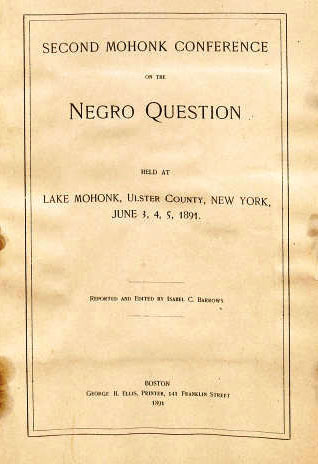

Early this July, the Sojourner Truth Library at SUNY New Paltz digitized a rare historical publication.
The historical material, titled “The Second Mohonk Conference on the Negro Question, held at Lake Mohonk, Ulster County, New York, June 3, 4, 5, 1891,” is now available to the public on the library’s online databases.
According to Morgan Gwenwald, the Special Collections Librarian at New Paltz, a former student scanned and transcribed the entire document.
“A former student who did the bulk of the work on this and did the scanning, Sandy Marsh, got really hooked on archives and thought they were way interesting,” said Gwenwald.
The publication documents the proceedings of a post-Civil War conference on the subject of the rights of people of color.
“I’m not an expert at all, but I think it was interesting that there were no black people invited to the conference,” said Dean Mark Colvson of Library Services. “It was this idea of sort of the best and brightest minds looking at this difficult problem. Of course, that wouldn’t necessarily involve any actual people who suffer the most from the situation. In reality, it’s probably a progressive group that are looking at the fact that despite it being [26] years after the Civil War, things are not right.”
The publication’s value and rarity was discovered when a researcher asked to the use the document in person.
“[Morgan Gwenwald] realized how fragile the item is and that we couldn’t lend it to the person [who requested to use it],” Colvson said. “And so instead we realized ‘let’s scan it’ and then we we started looking around and there were no other places that had it to refer the person to. Then it was just really interesting.”
Students at New Paltz have used similar historic items in interesting ways in the past. Colvson cited a former project in the English department on “objects and narrative,” in which students were challenged to give historical and personal context on various objects found in local archives.
“They went into our special collections and archives around the region and found objects of interest and researched them and told their stories,” Colvson said. “The students were blown away by the experience and it was a remarkable presentation.”
In reference to this “objects and narrative” project, Gwenwald said, “[The students] created a web page about it and whatever their objects were and now that stuff lives on the web in a way that other researchers, historians or students can look up and see it.”
To view this document and other historical rarities, students can visit the Hudson River Valley Heritage website, at www.hrvh.org.
